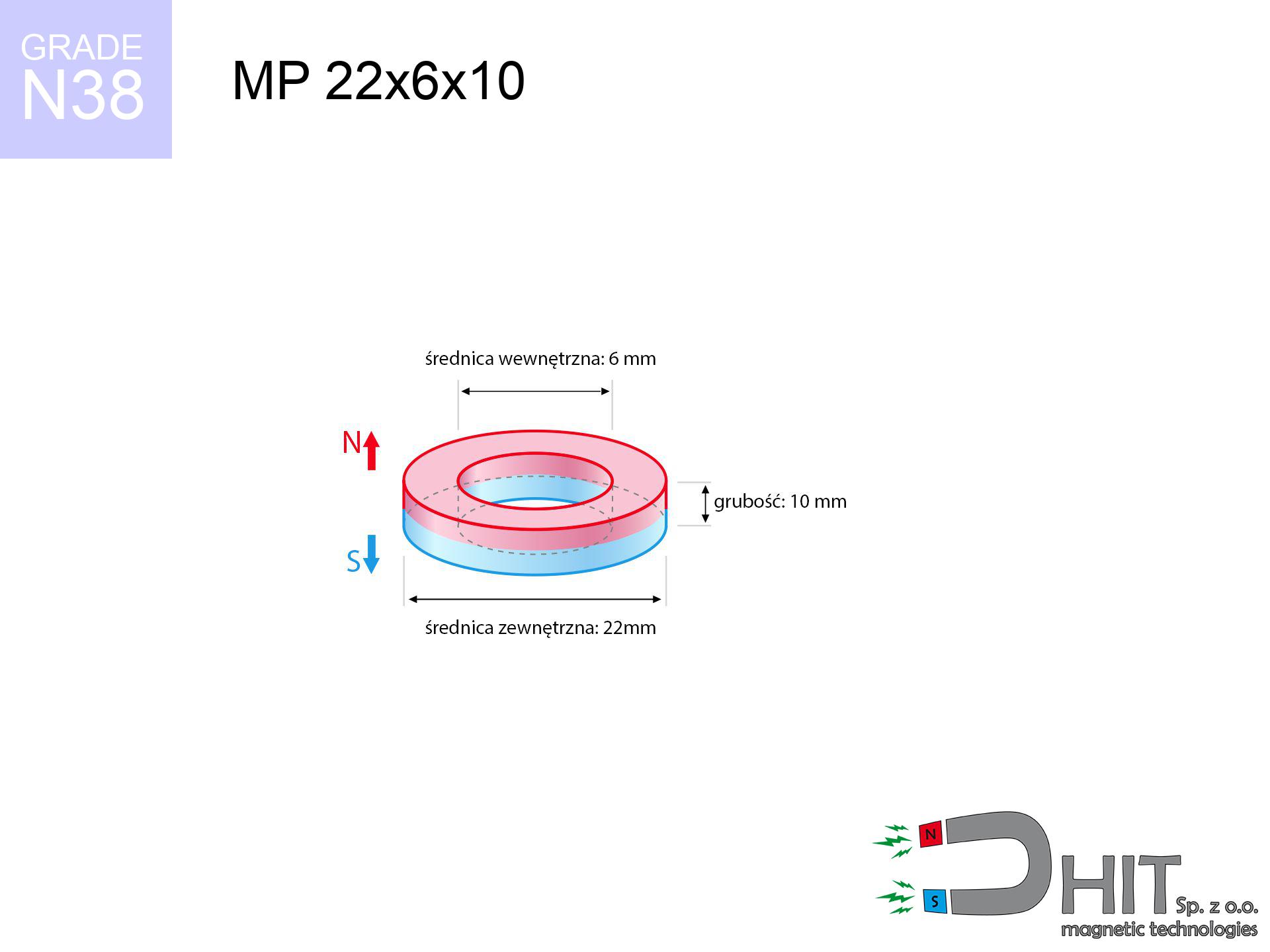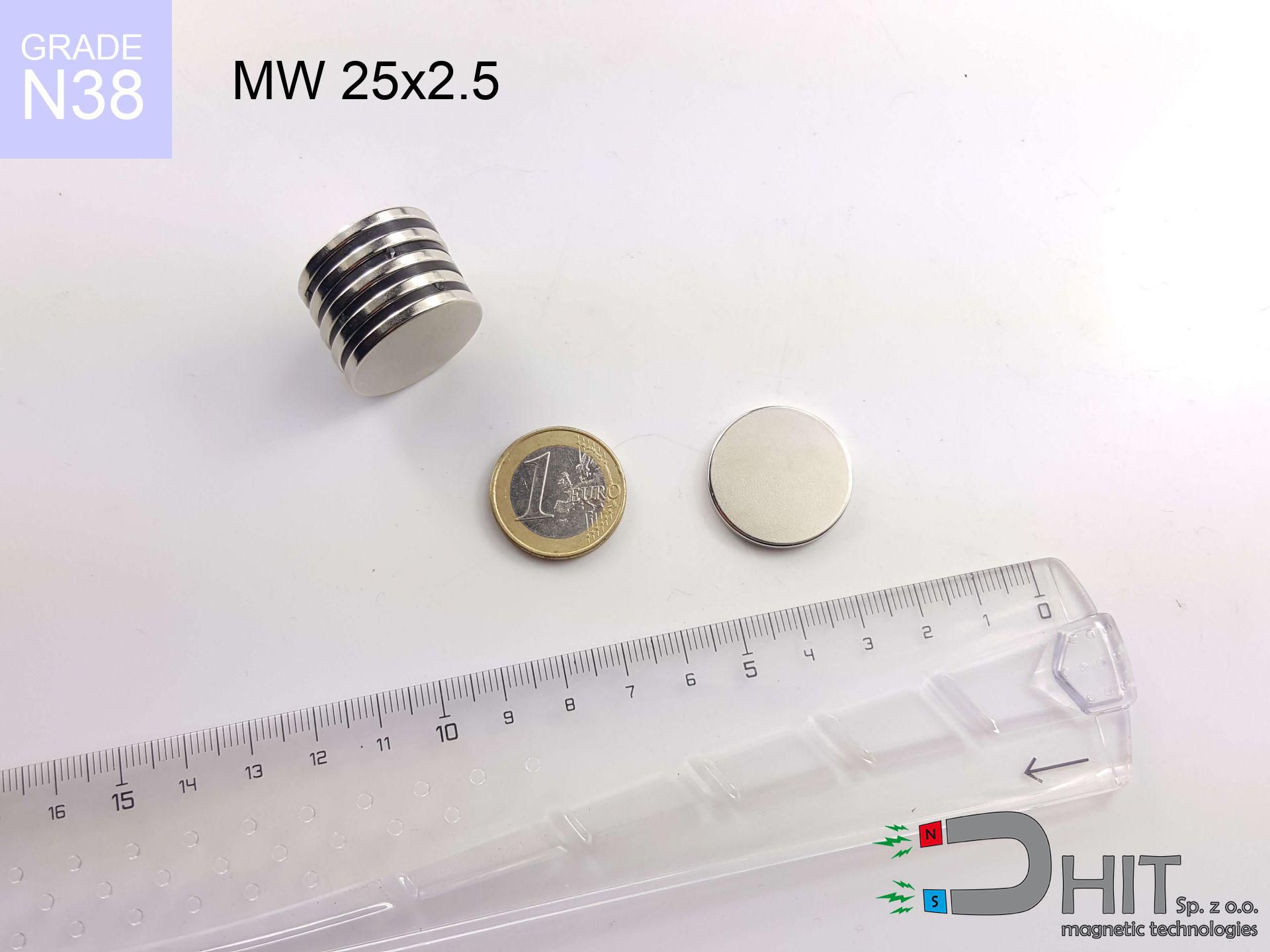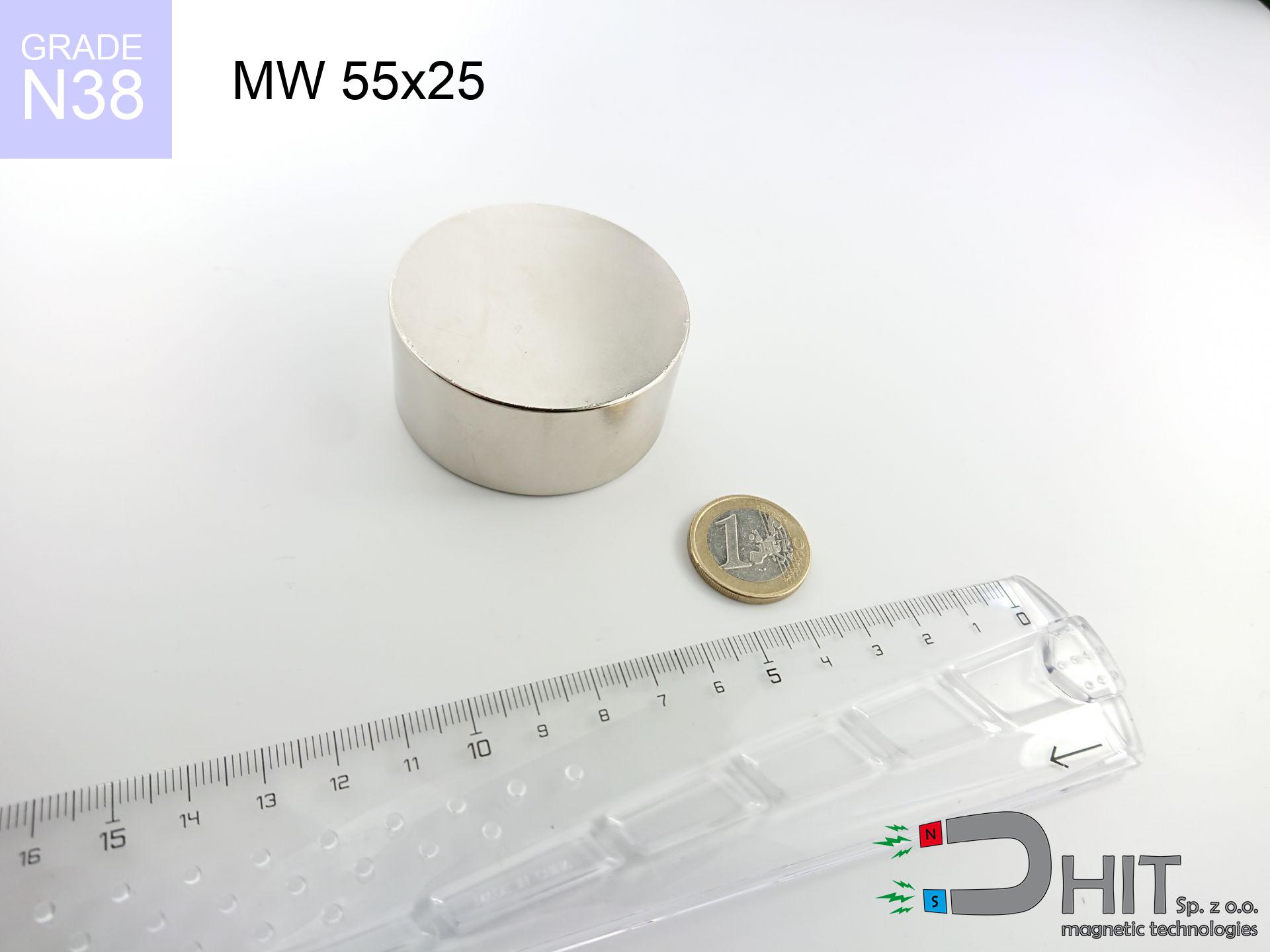UMGW 75x33x18 [M10] GW / N38 - magnetic holder internal thread
magnetic holder internal thread
Catalog no 180420
GTIN: 5906301813798
Diameter Ø
75 mm [±1 mm]
Height
33 mm [±1 mm]
Height
18 mm [±1 mm]
Weight
475 g
Load capacity
162.00 kg / 1588.68 N
189.91 ZŁ with VAT / pcs + price for transport
154.40 ZŁ net + 23% VAT / pcs
bulk discounts:
Need more?Need advice?
Give us a call
+48 888 99 98 98
alternatively drop us a message through
our online form
the contact page.
Weight as well as shape of a magnet can be analyzed using our
magnetic calculator.
Order by 14:00 and we’ll ship today!
UMGW 75x33x18 [M10] GW / N38 - magnetic holder internal thread
Specification / characteristics UMGW 75x33x18 [M10] GW / N38 - magnetic holder internal thread
| properties | values |
|---|---|
| Cat. no. | 180420 |
| GTIN | 5906301813798 |
| Production/Distribution | Dhit sp. z o.o. |
| Country of origin | Poland / China / Germany |
| Customs code | 85059029 |
| Diameter Ø | 75 mm [±1 mm] |
| Height | 33 mm [±1 mm] |
| Height | 18 mm [±1 mm] |
| Weight | 475 g |
| Load capacity ~ ? | 162.00 kg / 1588.68 N |
| Manufacturing Tolerance | ±1 mm |
Magnetic properties of material N38
| properties | values | units |
|---|---|---|
| remenance Br [Min. - Max.] ? | 12.2-12.6 | kGs |
| remenance Br [Min. - Max.] ? | 1220-1260 | T |
| coercivity bHc ? | 10.8-11.5 | kOe |
| coercivity bHc ? | 860-915 | kA/m |
| actual internal force iHc | ≥ 12 | kOe |
| actual internal force iHc | ≥ 955 | kA/m |
| energy density [Min. - Max.] ? | 36-38 | BH max MGOe |
| energy density [Min. - Max.] ? | 287-303 | BH max KJ/m |
| max. temperature ? | ≤ 80 | °C |
Physical properties of sintered neodymium magnets Nd2Fe14B at 20°C
| properties | values | units |
|---|---|---|
| Vickers hardness | ≥550 | Hv |
| Density | ≥7.4 | g/cm3 |
| Curie Temperature TC | 312 - 380 | °C |
| Curie Temperature TF | 593 - 716 | °F |
| Specific resistance | 150 | μΩ⋅Cm |
| Bending strength | 250 | Mpa |
| Compressive strength | 1000~1100 | Mpa |
| Thermal expansion parallel (∥) to orientation (M) | (3-4) x 106 | °C-1 |
| Thermal expansion perpendicular (⊥) to orientation (M) | -(1-3) x 10-6 | °C-1 |
| Young's modulus | 1.7 x 104 | kg/mm² |
Jak rozdzielać?
Nie próbuj odrywać magnesów siłą!
Zawsze zsuwaj je na bok krawędzi stołu.
Elektronika
Trzymaj z dala od dysków HDD, kart płatniczych i telefonów.
Rozruszniki Serca
Osoby z rozrusznikiem muszą zachować dystans min. 10 cm.
Nie dla dzieci
Ryzyko połknięcia. Połknięcie dwóch magnesów grozi śmiercią.
Kruchy materiał
Magnes to ceramika! Uderzenie o inny magnes spowoduje odpryski.
Do czego użyć tego magnesu?
Sprawdzone zastosowania dla wymiaru 15x10x2 mm
Elektronika i Czujniki
Idealny jako element wyzwalający dla czujników Halla oraz kontaktronów w systemach alarmowych. Płaski kształt (2mm) pozwala na ukrycie go w wąskich szczelinach obudowy.
Modelarstwo i Druk 3D
Stosowany do tworzenia niewidocznych zamknięć w modelach drukowanych 3D. Można go wprasować w wydruk lub wkleić w kieszeń zaprojektowaną w modelu CAD.
Meble i Fronty
Używany jako "domykacz" lekkich drzwiczek szafkowych, gdzie standardowe magnesy meblowe są za grube. Wymaga wklejenia w płytkie podfrezowanie.
Other deals
Strengths as well as weaknesses of neodymium magnets.
In addition to their magnetic capacity, neodymium magnets provide the following advantages:
- They do not lose power, even after approximately ten years – the decrease in lifting capacity is only ~1% (according to tests),
- They possess excellent resistance to magnetic field loss due to external fields,
- Thanks to the metallic finish, the surface of Ni-Cu-Ni, gold-plated, or silver-plated gives an modern appearance,
- They show high magnetic induction at the operating surface, which improves attraction properties,
- Neodymium magnets are characterized by extremely high magnetic induction on the magnet surface and can work (depending on the shape) even at a temperature of 230°C or more...
- Thanks to versatility in forming and the capacity to customize to client solutions,
- Fundamental importance in electronics industry – they serve a role in mass storage devices, brushless drives, diagnostic systems, and industrial machines.
- Thanks to concentrated force, small magnets offer high operating force, in miniature format,
Disadvantages of neodymium magnets:
- They are fragile upon too strong impacts. To avoid cracks, it is worth securing magnets using a steel holder. Such protection not only shields the magnet but also improves its resistance to damage
- When exposed to high temperature, neodymium magnets suffer a drop in strength. Often, when the temperature exceeds 80°C, their strength decreases (depending on the size and shape of the magnet). For those who need magnets for extreme conditions, we offer [AH] versions withstanding up to 230°C
- When exposed to humidity, magnets start to rust. To use them in conditions outside, it is recommended to use protective magnets, such as magnets in rubber or plastics, which prevent oxidation as well as corrosion.
- Due to limitations in realizing threads and complicated forms in magnets, we propose using casing - magnetic mechanism.
- Health risk related to microscopic parts of magnets can be dangerous, if swallowed, which becomes key in the aspect of protecting the youngest. It is also worth noting that small components of these magnets can complicate diagnosis medical in case of swallowing.
- Higher cost of purchase is one of the disadvantages compared to ceramic magnets, especially in budget applications
Maximum lifting capacity of the magnet – what affects it?
Holding force of 162.00 kg is a result of laboratory testing conducted under standard conditions:
- on a plate made of structural steel, perfectly concentrating the magnetic field
- possessing a massiveness of min. 10 mm to avoid saturation
- characterized by smoothness
- under conditions of ideal adhesion (metal-to-metal)
- under perpendicular application of breakaway force (90-degree angle)
- at ambient temperature room level
Determinants of practical lifting force of a magnet
Please note that the application force may be lower influenced by the following factors, starting with the most relevant:
- Distance – existence of any layer (rust, dirt, air) acts as an insulator, which reduces capacity rapidly (even by 50% at 0.5 mm).
- Angle of force application – highest force is reached only during perpendicular pulling. The resistance to sliding of the magnet along the surface is typically several times smaller (approx. 1/5 of the lifting capacity).
- Base massiveness – insufficiently thick sheet does not accept the full field, causing part of the flux to be lost into the air.
- Steel type – low-carbon steel attracts best. Higher carbon content lower magnetic properties and lifting capacity.
- Surface quality – the more even the surface, the larger the contact zone and stronger the hold. Unevenness acts like micro-gaps.
- Thermal conditions – NdFeB sinters have a sensitivity to temperature. When it is hot they lose power, and in frost they can be stronger (up to a certain limit).
* Lifting capacity was assessed using a smooth steel plate of suitable thickness (min. 20 mm), under vertically applied force, whereas under attempts to slide the magnet the lifting capacity is smaller. In addition, even a small distance {between} the magnet’s surface and the plate reduces the lifting capacity.
H&S for magnets
Medical implants
Individuals with a ICD have to maintain an absolute distance from magnets. The magnetic field can stop the operation of the implant.
Bodily injuries
Mind your fingers. Two large magnets will snap together immediately with a force of massive weight, crushing anything in their path. Exercise extreme caution!
No play value
Adult use only. Tiny parts can be swallowed, leading to intestinal necrosis. Store away from kids and pets.
Handling rules
Before starting, read the rules. Sudden snapping can destroy the magnet or hurt your hand. Think ahead.
Power loss in heat
Regular neodymium magnets (N-type) undergo demagnetization when the temperature surpasses 80°C. The loss of strength is permanent.
Phone sensors
Navigation devices and smartphones are extremely susceptible to magnetic fields. Close proximity with a powerful NdFeB magnet can ruin the sensors in your phone.
Cards and drives
Powerful magnetic fields can erase data on payment cards, hard drives, and storage devices. Keep a distance of min. 10 cm.
Magnet fragility
Neodymium magnets are sintered ceramics, meaning they are prone to chipping. Impact of two magnets will cause them breaking into shards.
Allergy Warning
Some people suffer from a contact allergy to nickel, which is the typical protective layer for NdFeB magnets. Frequent touching can result in an allergic reaction. We recommend wear protective gloves.
Fire risk
Dust generated during cutting of magnets is flammable. Do not drill into magnets unless you are an expert.
Security!
Looking for details? Read our article: Are neodymium magnets dangerous?

![Magnet for screw UMGW 75x33x18 [M10] GW / N38 Magnet for screw UMGW 75x33x18 [M10] GW / N38](https://cdn3.dhit.pl/graphics/banners/magnet.webp)
![UMGW 75x33x18 [M10] GW / N38 - magnetic holder internal thread](https://cdn3.dhit.pl/graphics/products/umgw-75x33x18-m10-gw-cak.jpg)
![UMGW 75x33x18 [M10] GW / N38 - magnetic holder internal thread - ujęcie 2](https://cdn3.dhit.pl/graphics/products/umgw-75x33x18-m10-gw-buj.jpg)





